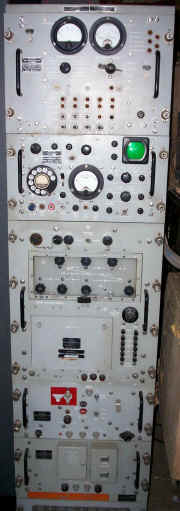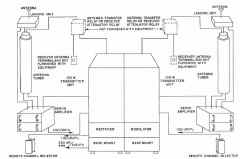Collection spot for miscellaneous info as I gather it
Please send me e-mail if you have any
additions or corrections
Back to Navy Transmitter Page
Back to K4NYW's URT-3 restoration page
Technical Article
"An automatic tuning communication transmitter"
Dettman, M.
IRE International Convention Record
Volume 1, Issue , Mar 1953 Page(s): 137 - 144
An essentially identical article is here
beginning on page 271
An additional article on the automatic tuning system begins on page 279
Manuals
The 24 Feb 1953 "Temporary" instruction books NAVSHIPS 91833 is
typewritten
and missing a number of illustrations. Module removal and repair
sections are also missing.
The 91833(A) version is typeset and includes the missing sections.
Maintenance & Repair Training Notebook
Specification
MIL-T-15480A (SHIPS)
Development - See also TEG Development
XTEJ description November
1945
XTEJ description (Westinghouse) September
1946
TEJ Development
Project
Nomenclature Change September 1950
TEJ=>AN/URT-4, TEK=> AN/URT-2,
TEL=> AN/URT-3
Federal Development began in 1947, prototype 1948, field test 1950
NObsr 43409 17 June 1949 Federal Telephone & Radio Corp.
NObsr 52021 01 Sept 1950 Federal Telephone & Radio Corp.
Approximate Cost
AN/URT-2 $21,340 ea.
AN/URT-3 $24,390 ea.
AN/URT-4 $44,220 ea.
Output
AM/CW/FSK
URT-2 - 100 watts 300kc-26mc
URT-3 & URT-4 - 100 watts 300kc-2mc & 500 watts 2mc-26mc
Power requirements
Transmitter group - 115 vac single phase, 1000w
Booster - 220 or 440 vac, 3 phase, 1800w

Transmitter
More Photos - Antenna Tuner and other Accessory Units
